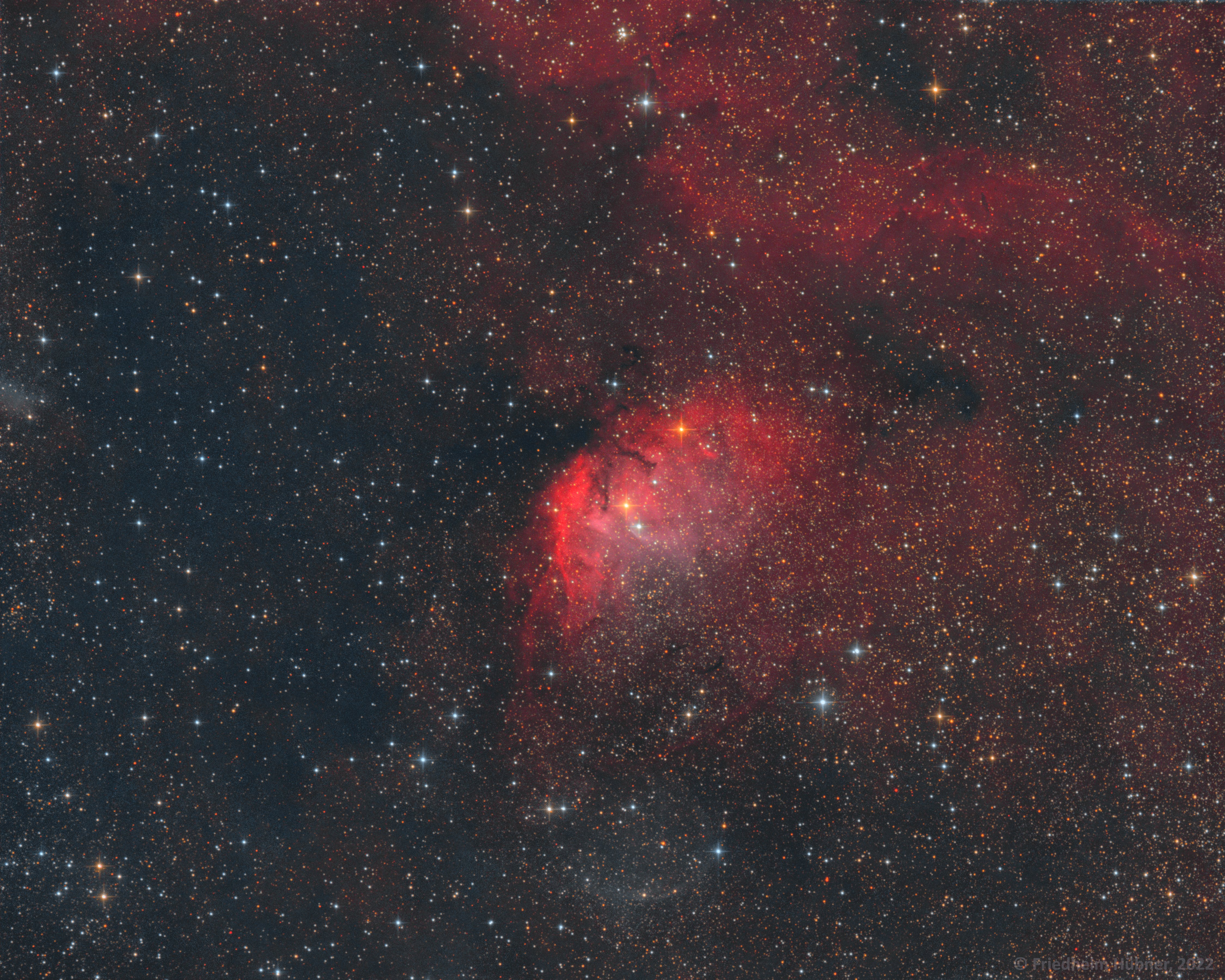|
Sh2-101 (Cyg)

Click on the image for a larger version
| Date/Site: |
23., 24. and 27. October 2021 and 8. bis 13. August 2022. Remote observatory on the AAR club's site in Presberg |
Exposure/
Filter: |
R: 10 x 300 seconds,
G: 11 x 300 seconds,
B: 12 x 300 seconds,
Hα: 62 x 480 seconds, 56 x 600 seconds,
O3: 12 x 480 seconds, 79 x 600 seconds (-20°C) |
| Camera: |
Moravian G3-16200 mit Astronomik Type II-Filtern |
Optics/
Instrument: |
250mm f/4,7 Newton mit VIP-3010 Paracorr auf 10Micron GM1000 HPS |
|
Guiding: ASI120 attached to a 61mm-finder,
Focusing with Microtouch and FocusMax,
Steuerung remote mit CCD-Commander, PHD_Broker mit PHD2/Multistar-Guiding and MaximDL 6,
Calibration and processing: MaximDL 6 and PixInsight 1.8 |
The emission nebula called the „Tulip-nebula“ lies in a very dynamic star-building area in the constellation Cygnus.
Near the western filaments of the nebula lies the microquasar Cygnus X-1, a double star, formed by a black hole with 15 solar masses and a O9.7 Iab supergiant with 21 solar masses. Cygnus X-1 is one of the stronges X-ray sources in the sky. The black hole accretes matter from its companion star on to an accretion-disc which emits higly energetic radiation. A pair of relativistic jets, arranged perpendicularly to the disk, are carrying part of the energy of the infalling material away into interstellar space thereby creating the bowshock we see.
With a lot of O3-exposure time I tried to pull the shock wave out of the background.
Narrowband-data from two years were processed.
Interestingly the bowshock could be imaged much clearer with the 4"-TMB refractor of the AAR.
|
© Friedhelm Hübner, last revision: 02.12.2025